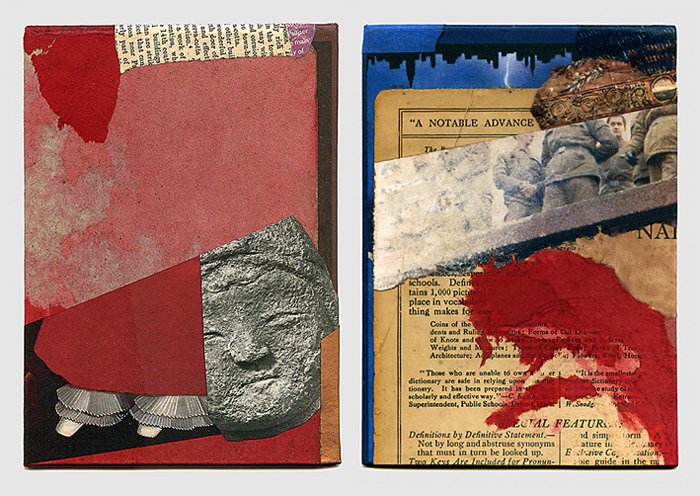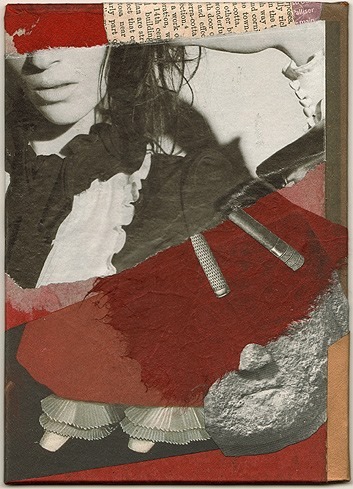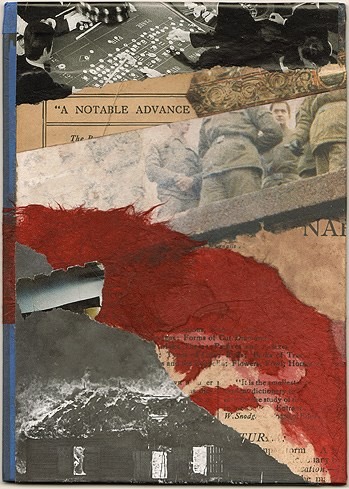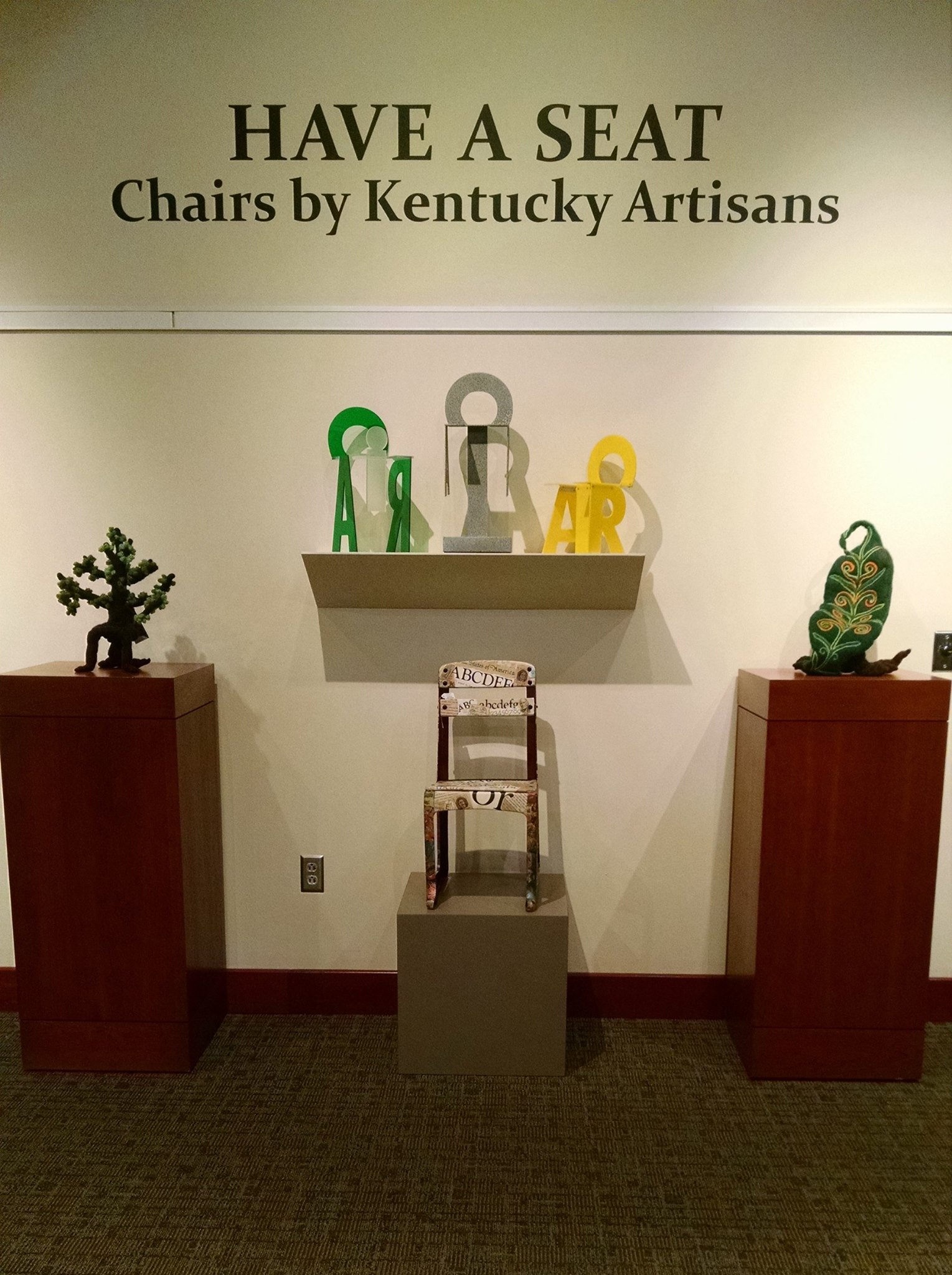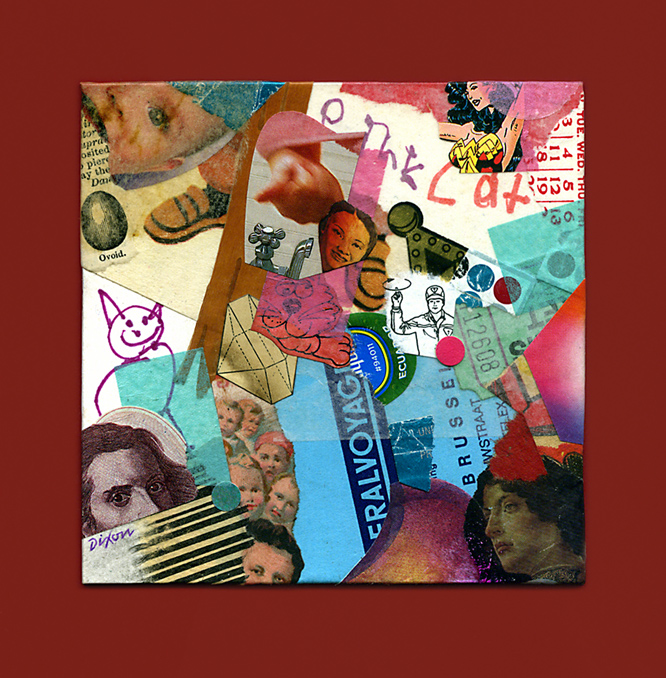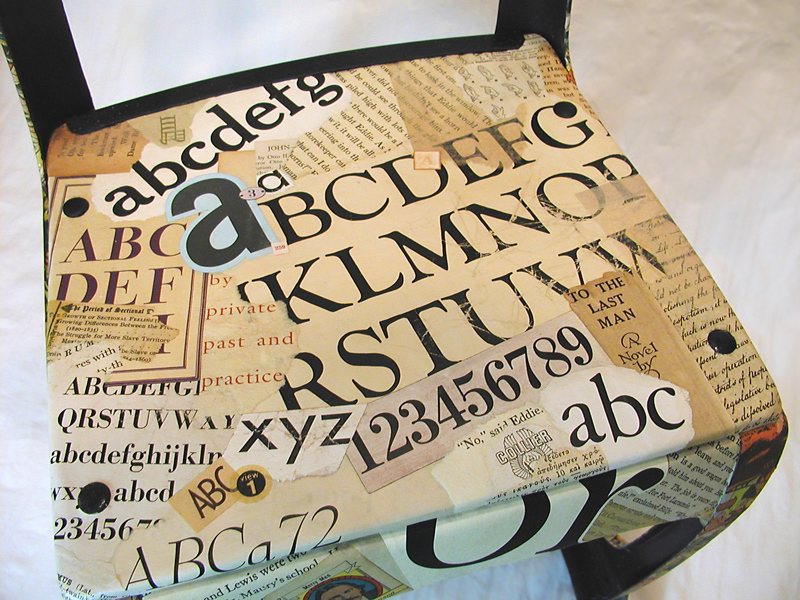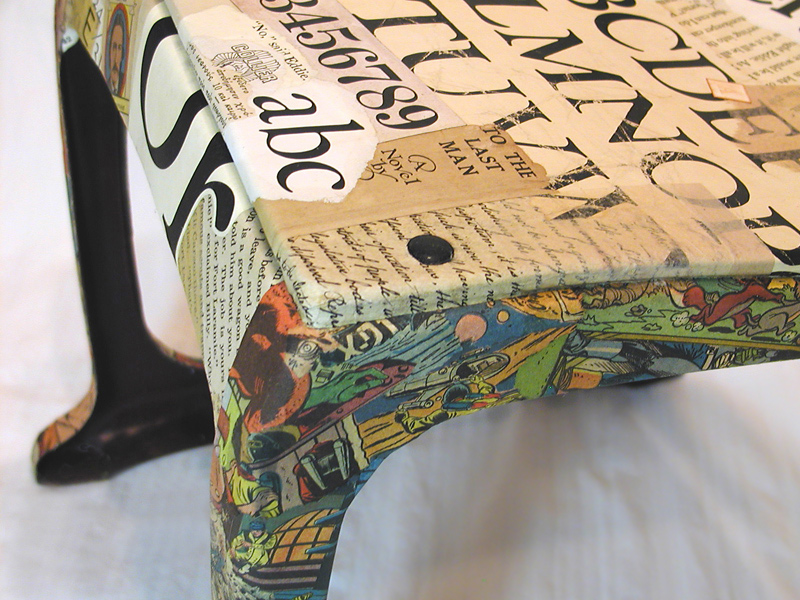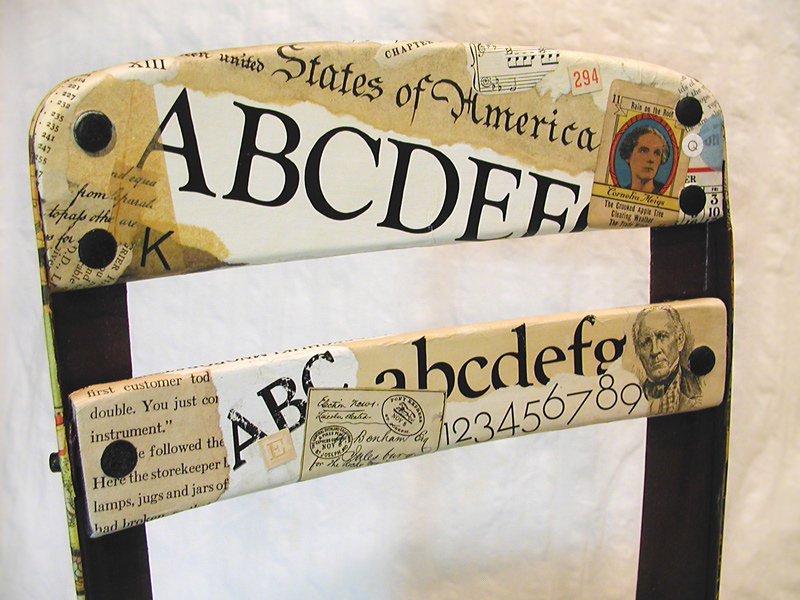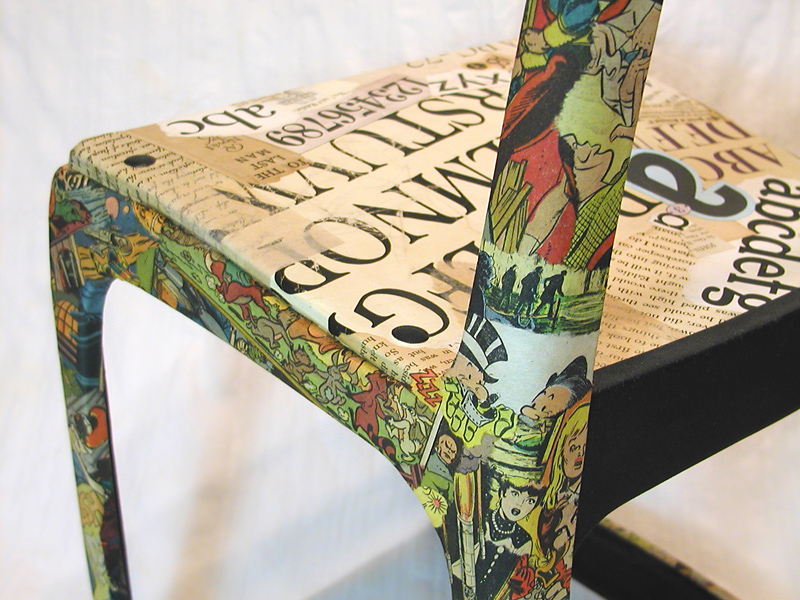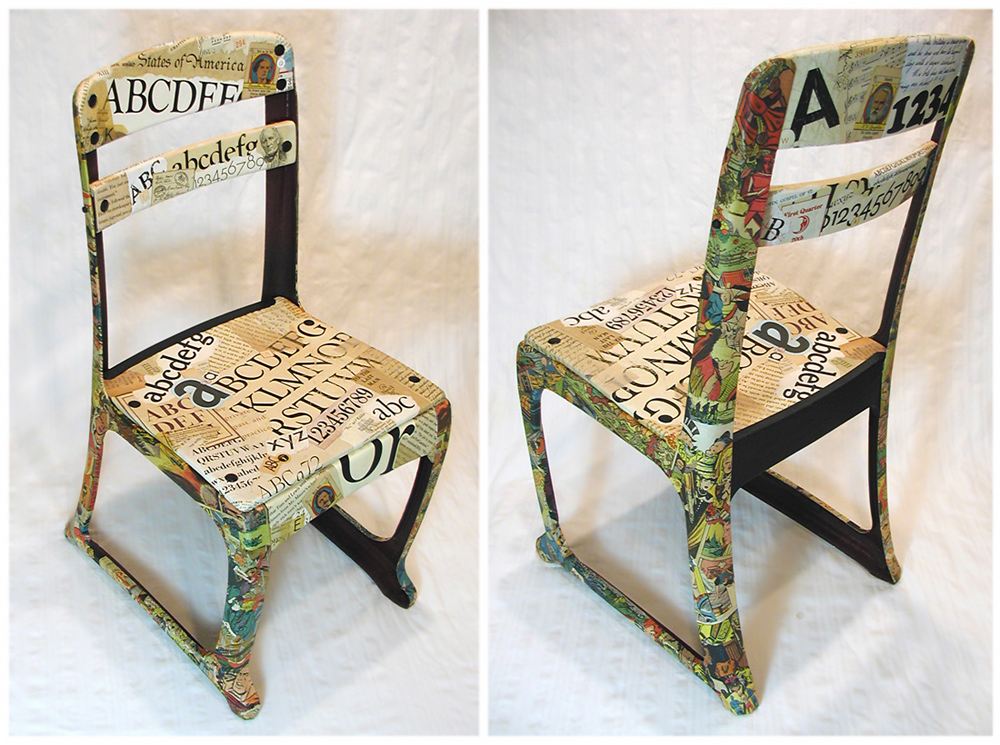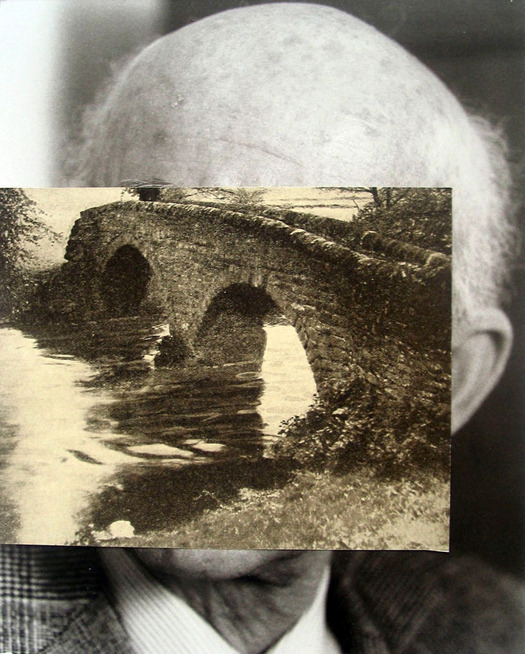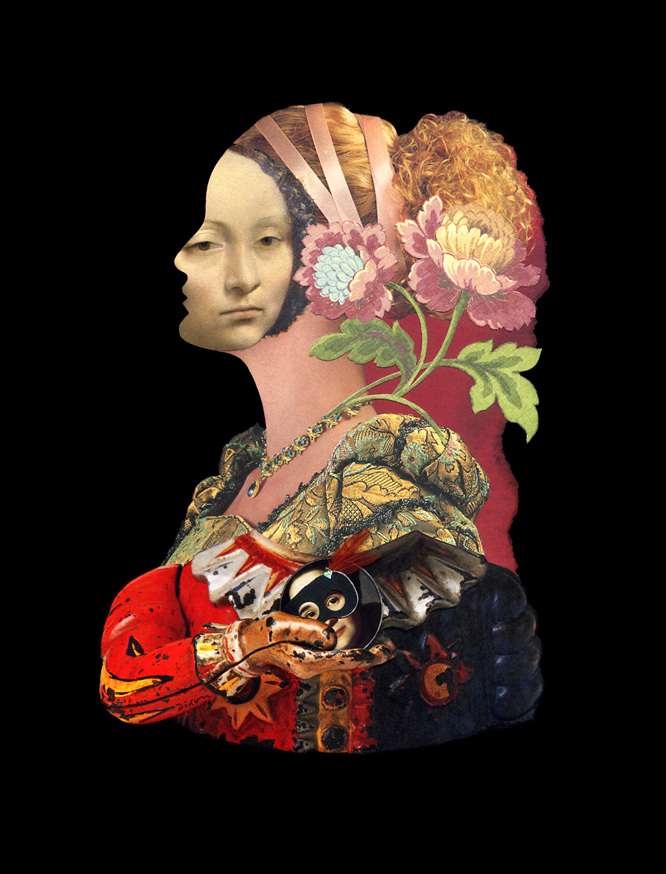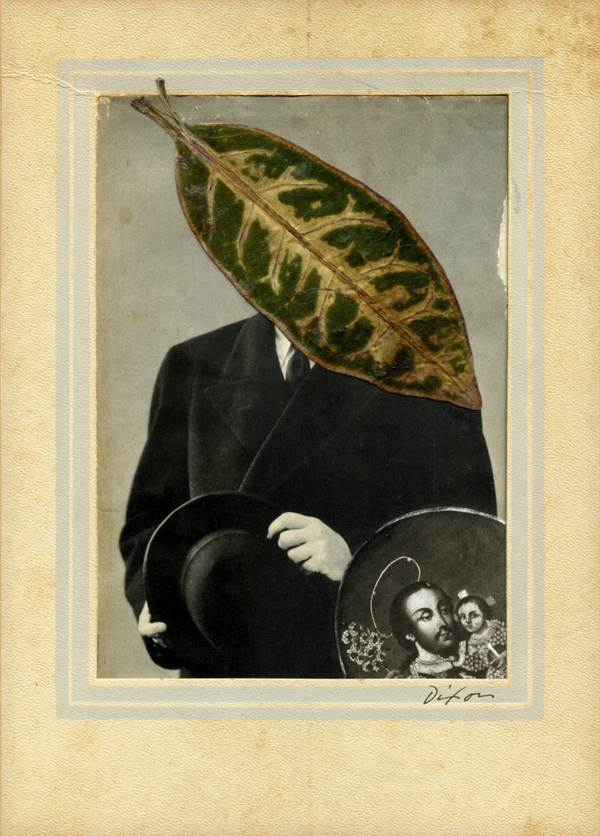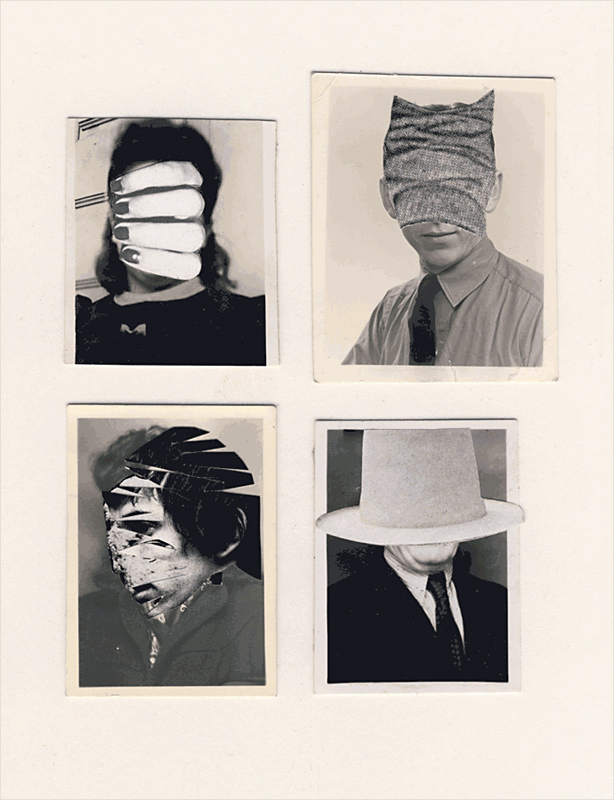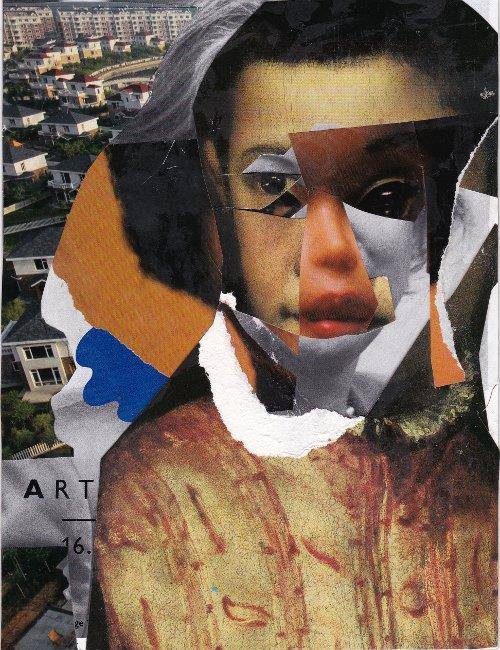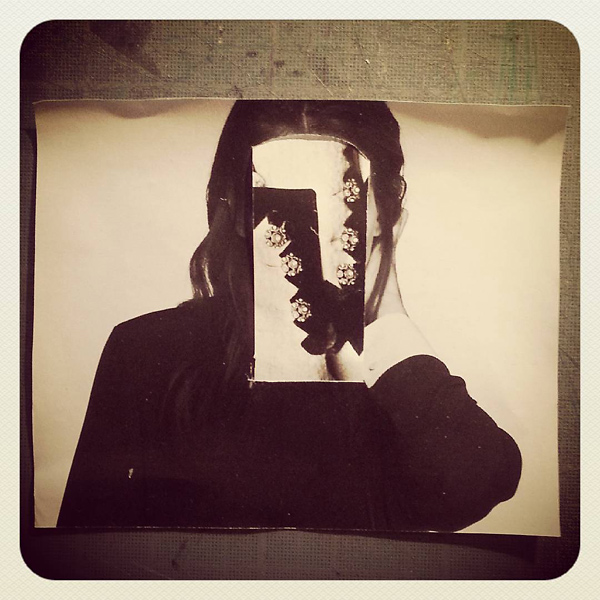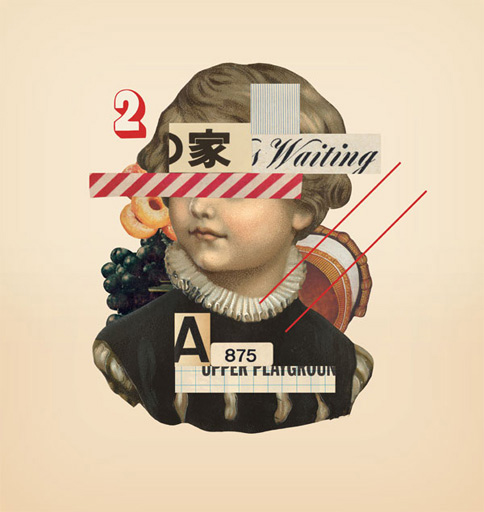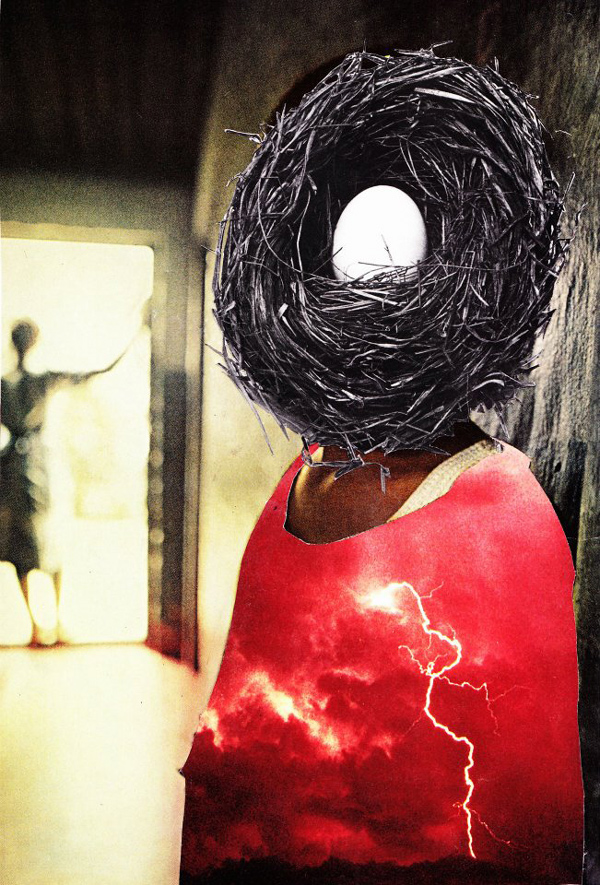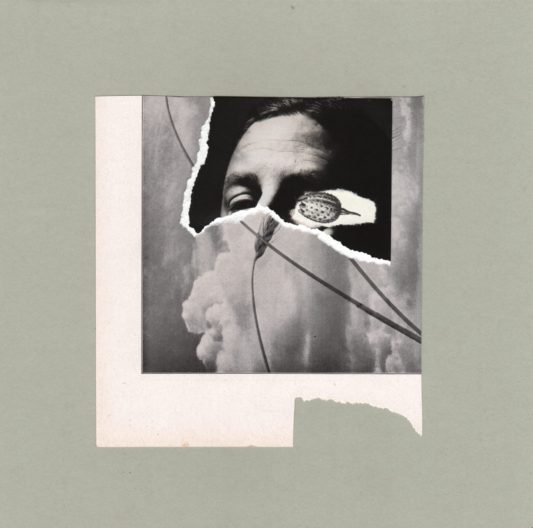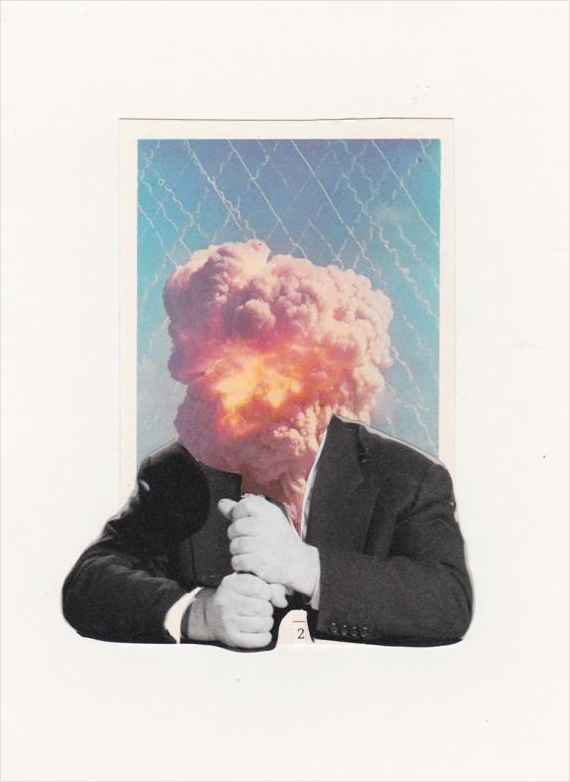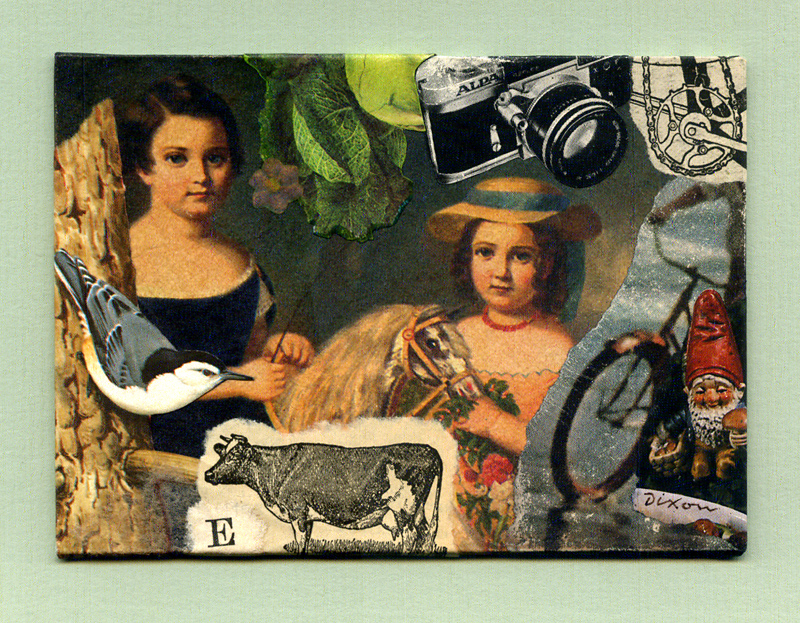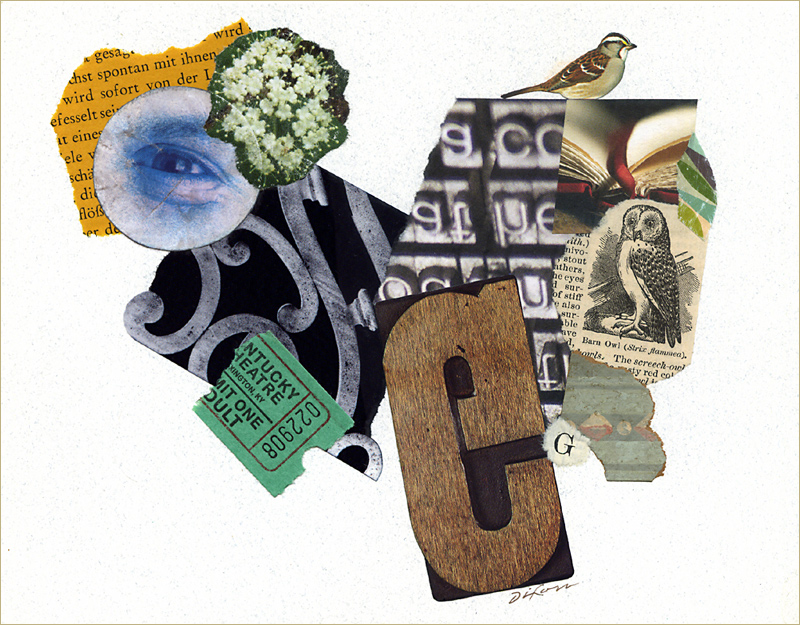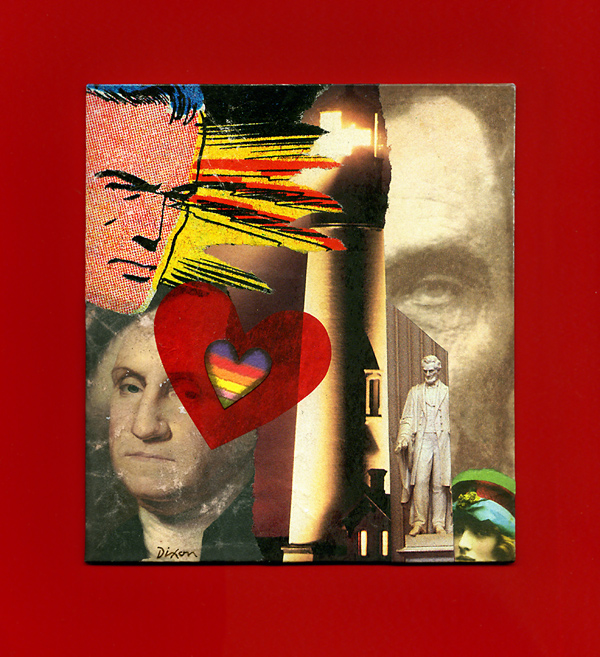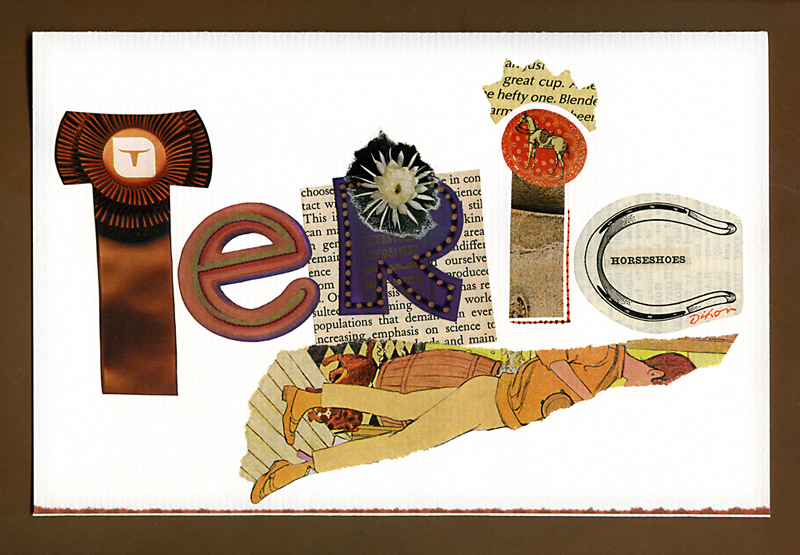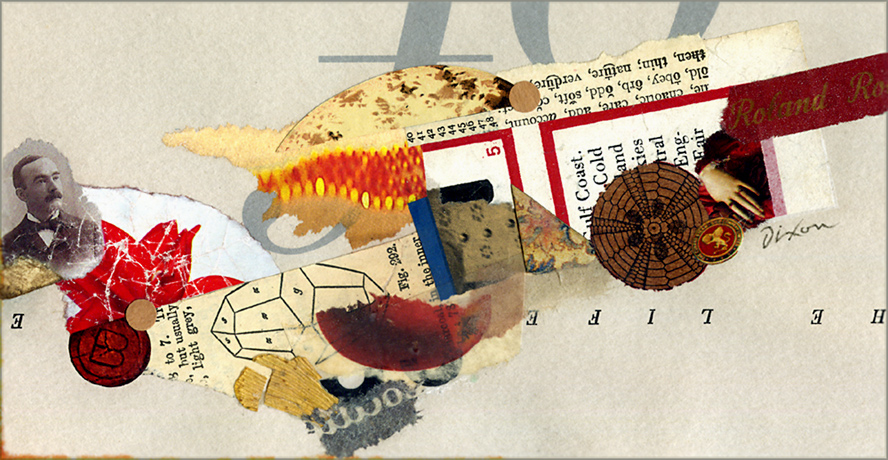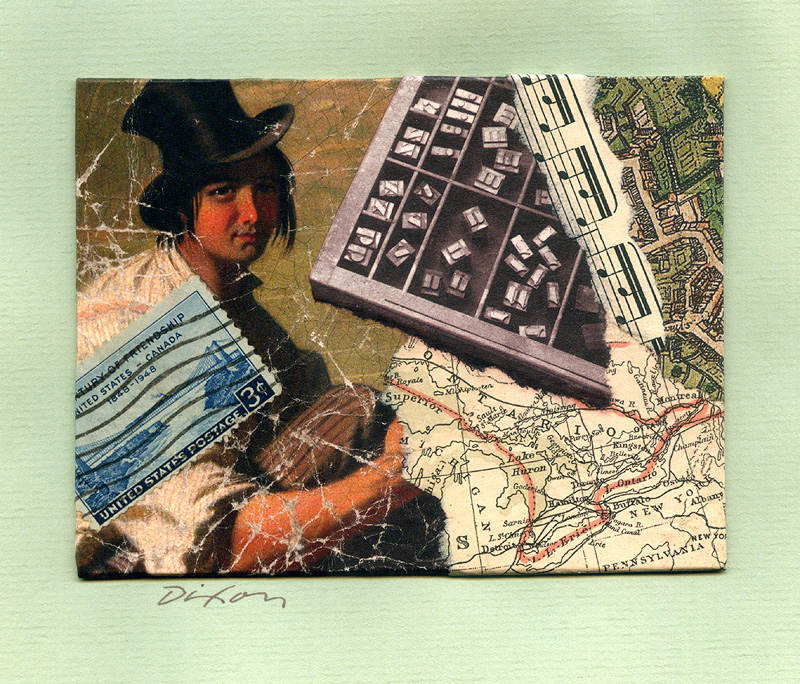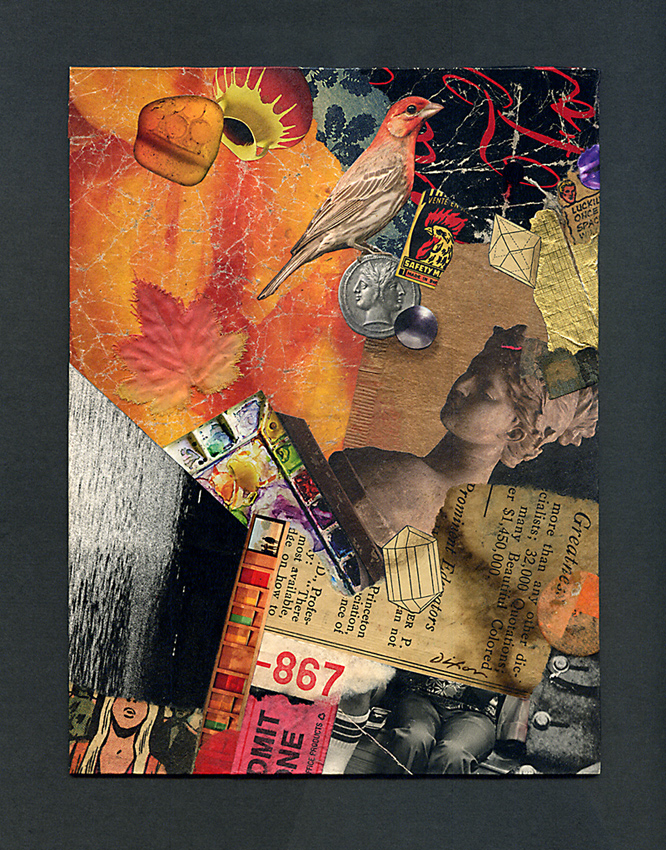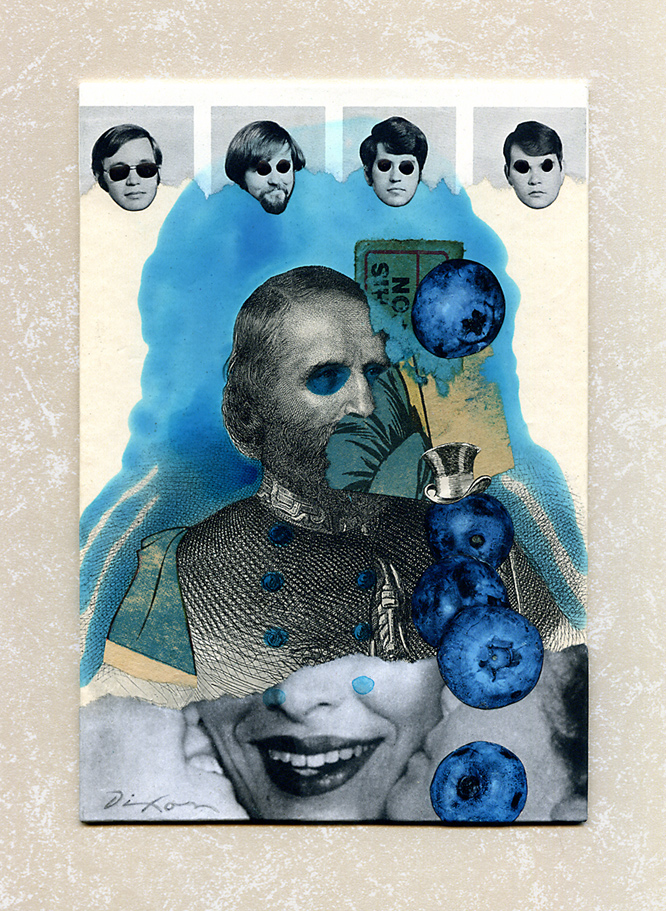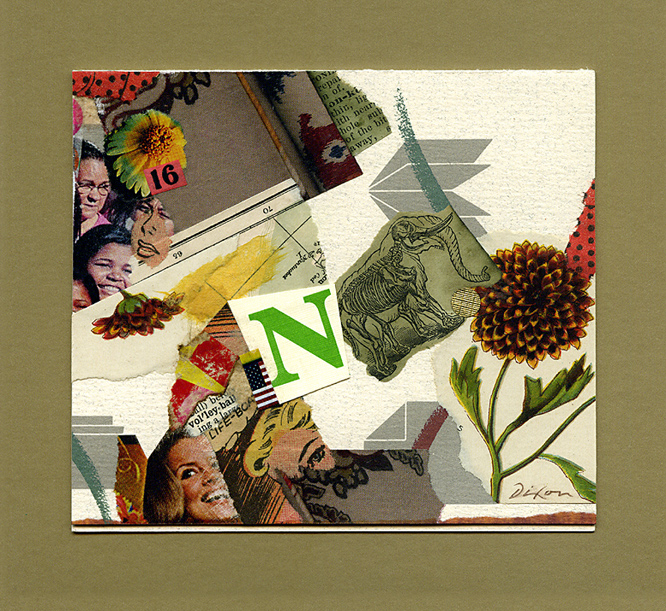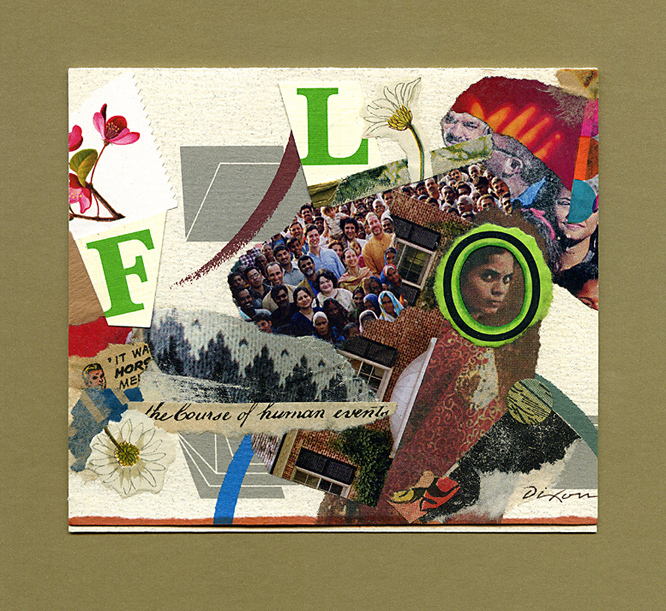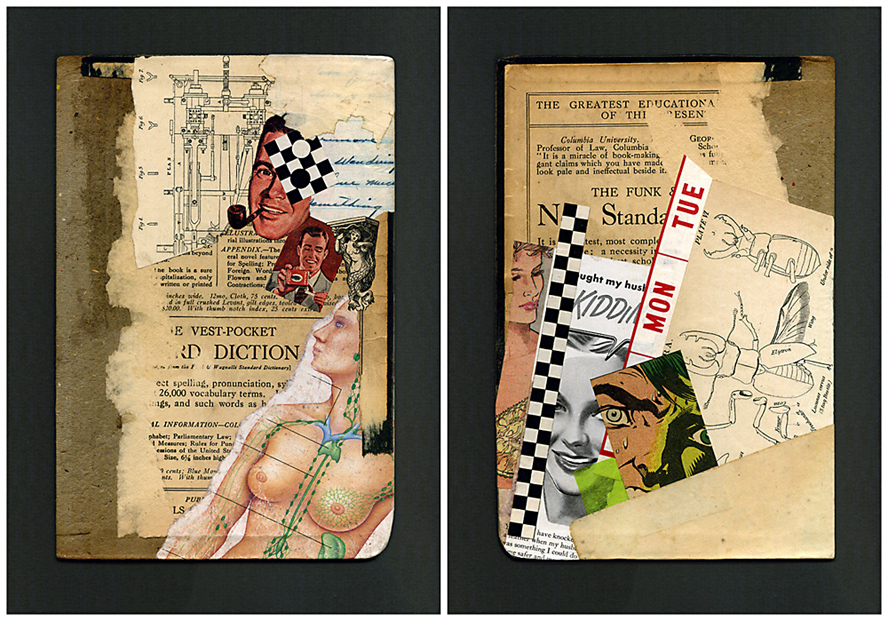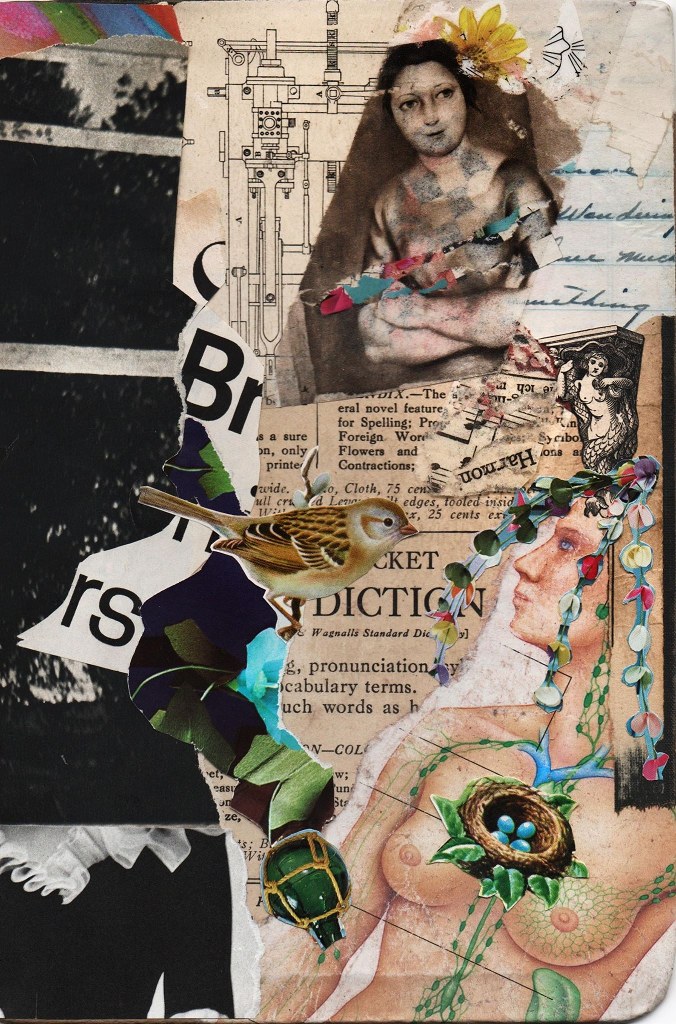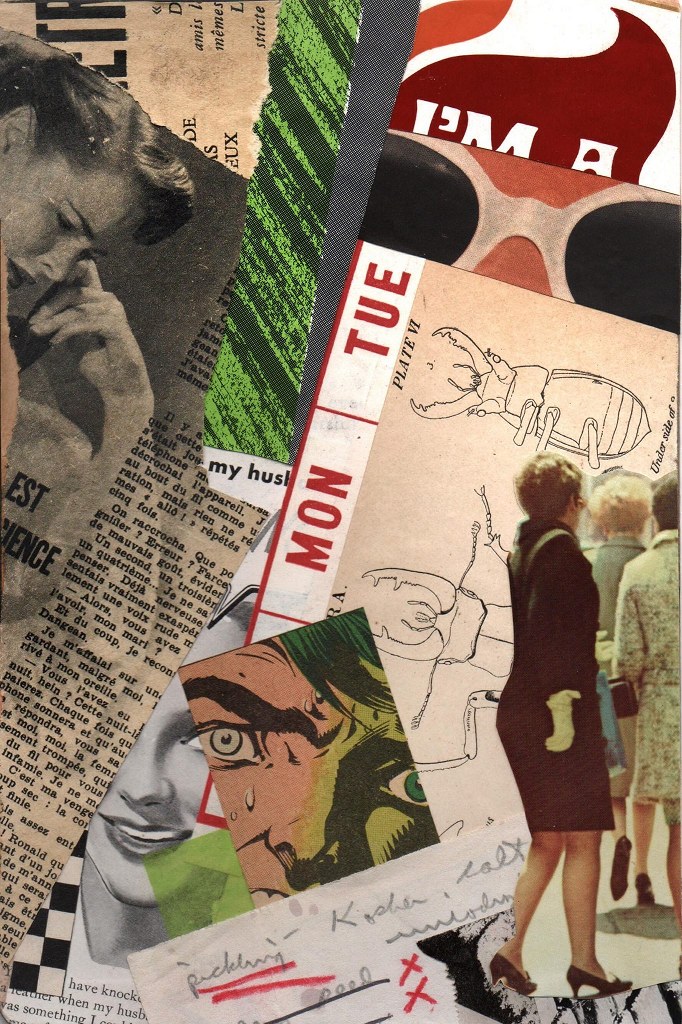“A random interaction — someone who says something to you on a street corner — is often enough to set off a cascade of creativity.”
— Carrie Barron
The deft completion of two “starts” on book covers by Stefan Kraft has been worth the wait. The German artist has brought his characteristic design restraint to our collaborative exercise, reinforcing the limited color scheme and textural qualities handed off to him without overloading the compositions. Nice work, Stefan!
I have come to see these types of collaborations as providing a creative springboard for the partner, rather than as a true interactive experience. The latter kind of effort is more difficult to define and initiate, but offers great potential for collage artists. I am currently working on such a project with fellow Kentuckian Robert Hugh Hunt, and I expect to highlight our mutual result in the very near future.
Untitled (*ection)
a collage miniature collaboration by J A Dixon and S Kraft
(start by Dixon, finish by Kraft)
5 x 7 inches, collection of J A Dixon
A Notable Advance
a collage miniature collaboration by J A Dixon and S Kraft
(start by Dixon, finish by Kraft)
5 x 7 inches, collection of S Kraft
